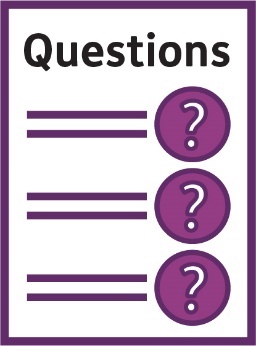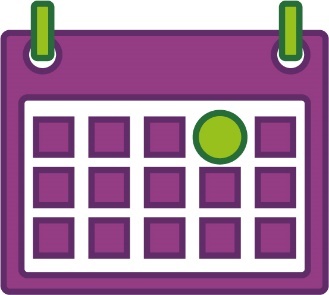Interview the worker
| It’s a good idea to interview a worker before you hire them so you can:
|
| You can interview someone by yourself. Or you can interview them with help from a friend, family member or support person. |
| Before you interview someone, you should have a list of questions you want to ask. And think about how the right person would answer those questions. |
| Interviewing someone is a way to find out:
|
Getting ready to interview someone
| If you want to interview a worker, you should contact them by:
|
| You can let them know:
|
| You can let them know if you’ll ask them to do a task that will be part of the job. For example, cooking your favourite meal. |
| You can ask them if there is anything they need to find the place you want to meet. For example, directions to your home. |
| It’s a good idea to tell them who will be there when you interview them. For example, yourself and a support worker who will take notes. |
| We have a tool that can help you choose good workers from the people you interview. You can find this tool on our website. |
Questions to ask
| We’ve included some questions you could ask when you interview a worker. | |
| You can ask them about how they did the job in the past. For example, how they supported someone to make friends in the community. | |
| You can also ask them about how they would do something in the future. If they never supported someone in the community before, you could ask how they would support you. | |
| You or the person helping you interview the worker can write down their answers. That way you can look at the answers later. | |
| We have a list of example questions that can help you. You can find these example questions on our website. | |
| It’s good to also let the worker ask questions about:
| |
| At the end, you can tell the worker when they’ll hear back from you about the job. | |
Interview the worker
| It’s a good idea to interview a worker before you hire them so you can:
|
| You can interview someone by yourself. Or you can interview them with help from a friend, family member or support person. |
| Before you interview someone, you should have a list of questions you want to ask. And think about how the right person would answer those questions. |
| Interviewing someone is a way to find out:
|
Getting ready to interview someone
| If you want to interview a worker, you should contact them by:
|
| You can let them know:
|
| You can let them know if you’ll ask them to do a task that will be part of the job. For example, cooking your favourite meal. |
| You can ask them if there is anything they need to find the place you want to meet. For example, directions to your home. |
| It’s a good idea to tell them who will be there when you interview them. For example, yourself and a support worker who will take notes. |
| We have a tool that can help you choose good workers from the people you interview. You can find this tool on our website. |
Questions to ask
| We’ve included some questions you could ask when you interview a worker. | |
| You can ask them about how they did the job in the past. For example, how they supported someone to make friends in the community. | |
| You can also ask them about how they would do something in the future. If they never supported someone in the community before, you could ask how they would support you. | |
| You or the person helping you interview the worker can write down their answers. That way you can look at the answers later. | |
| We have a list of example questions that can help you. You can find these example questions on our website. | |
| It’s good to also let the worker ask questions about:
| |
| At the end, you can tell the worker when they’ll hear back from you about the job. | |
















